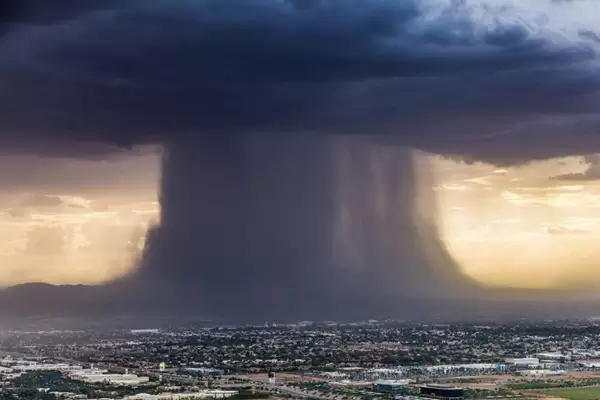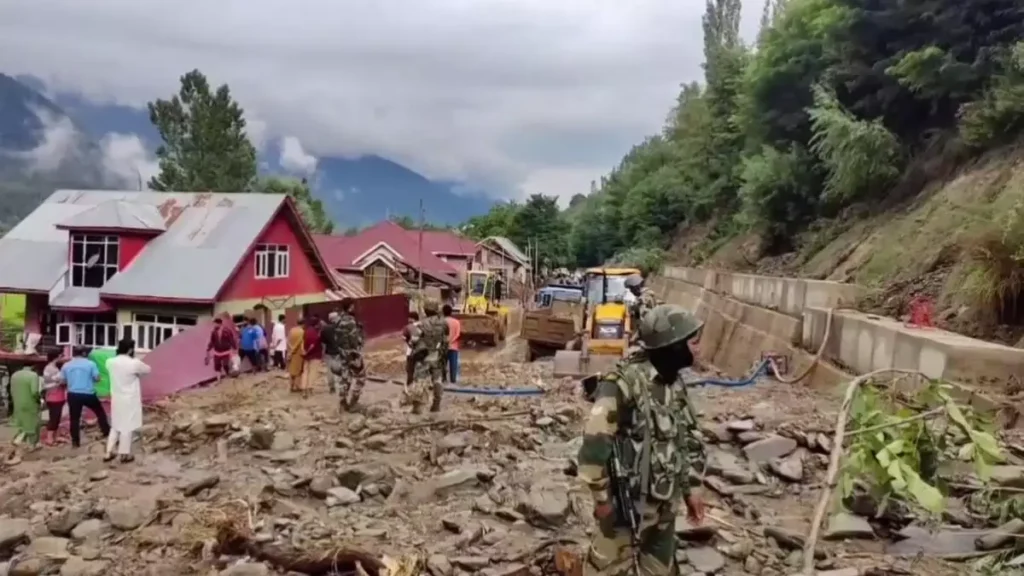Recent cloudbursts in Ganderbal district of Jammu and Kashmir damaged a road, closing Srinagar-Leh national highway and regions in Himachal Pradesh led to destructive impacts.
About Cloudbursts:
- Cloudburst is a sudden, very heavy rainfall, usually local in nature and of brief duration, often leading to flash floods.
- It involves a deluge of rain in a short period, usually less than an hour, and is capable of releasing up to 100 millimeters of rain in that short time.
- Cloudbursts occur when moist air moves up a mountain range, cools rapidly, and condenses into heavy rain.
- The phenomenon is often associated with the Indian monsoon season and typically happens in mountainous regions where the topography aids in rapid condensation.
Impact on India
- India, particularly the northern and northeastern regions, is highly susceptible to cloudbursts due to its unique topography and climatic conditions.
- The Himalayan region, including states like Uttarakhand, Himachal Pradesh, and Jammu & Kashmir, frequently experiences cloudbursts.
- The Western Ghats in states like Kerala and Karnataka also witnesses such events.
- One of the most devastating cloudbursts occurred in Uttarakhand in June 2013, leading to severe flooding and landslides, causing widespread destruction in places like Kedarnath.
Effects
- Flash Floods: Sudden, intense rain overwhelms rivers and streams, causing them to overflow.
- Landslides: Saturated soil on steep slopes can trigger landslides, causing further damage to life and property.
- Infrastructure Damage: Roads, bridges, and buildings can be severely damaged or destroyed.
- Loss of Life and Livelihoods: Cloudbursts often result in significant loss of life, displace populations, and disrupt livelihoods.
Mitigation and Preparedness
- Early Warning Systems: Improving weather forecasting and establishing early warning systems can help in timely evacuation and reducing casualties.
- Disaster Management Plans: States prone to cloudbursts need robust disaster management plans, including public awareness campaigns and emergency response drills.
- Infrastructure Planning: Building resilient infrastructure and avoiding construction in vulnerable areas can mitigate damage.
- Afforestation: Planting trees and maintaining vegetation cover can help in stabilizing slopes and reducing the risk of landslides.
Ref: Source
| UPSC IAS Preparation Resources | |
| Current Affairs Analysis | Topperspedia |
| GS Shots | Simply Explained |
| Daily Flash Cards | Daily Quiz |
Frequently Asked Question:
What is a cloudburst?
A cloudburst is a sudden, very heavy rainfall that is usually local in nature and of brief duration, often leading to flash floods. It involves a deluge of rain in a short period, usually less than an hour, and can release up to 100 millimeters of rain in that short time.
How do cloudbursts occur?
Cloudbursts occur when moist air moves up a mountain range, cools rapidly, and condenses into heavy rain. This rapid condensation leads to intense rainfall over a small area.
What is the typical duration of a cloudburst?
A cloudburst typically lasts less than an hour, but during that short period, it can release a significant amount of rainfall, leading to severe localized flooding



